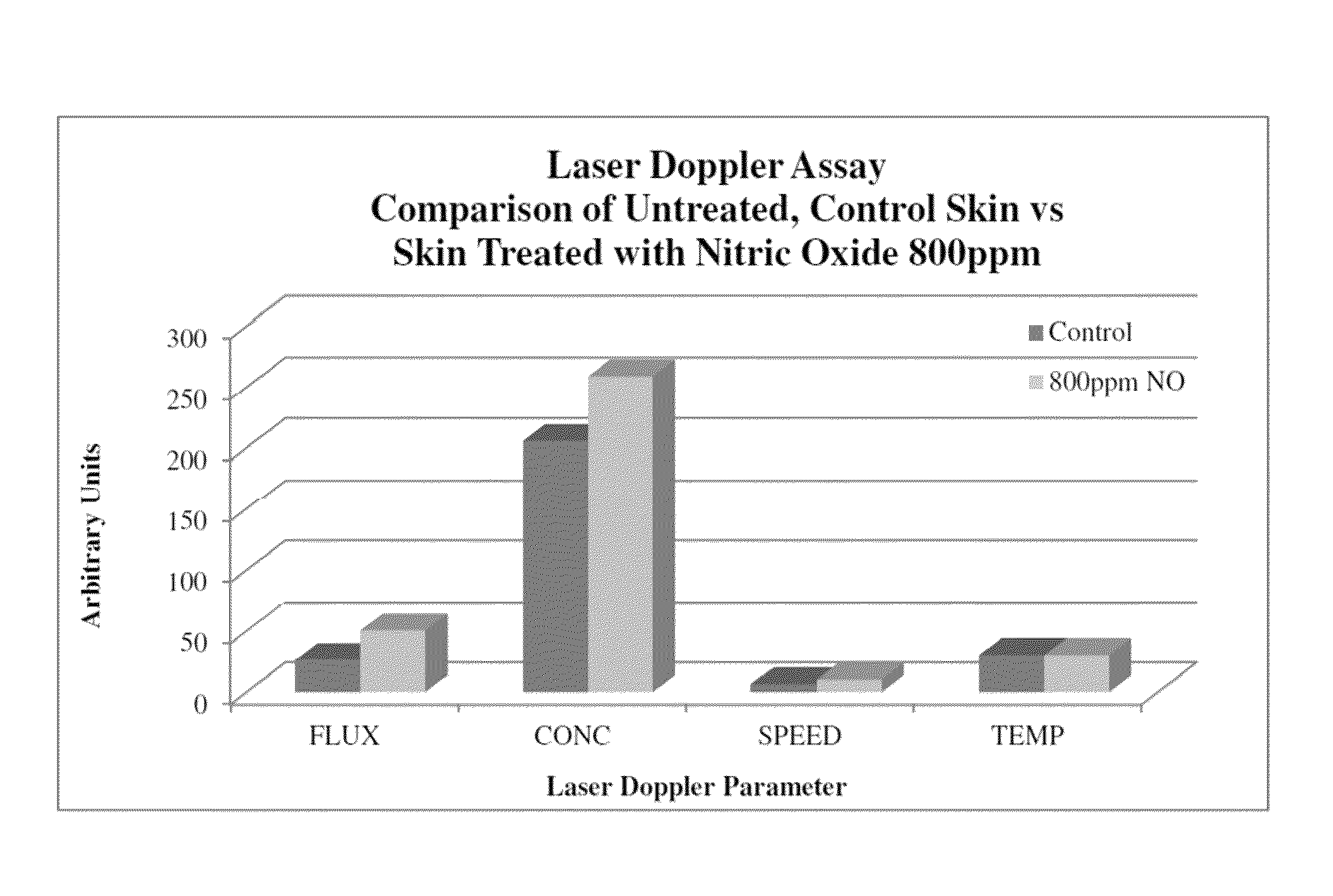Wound healing using topical systems and methods
a wound healing and topical technology, applied in the direction of tripeptide ingredients, pharmaceutical delivery mechanisms, peptide/protein ingredients, etc., can solve the problem that the delivery system does not work effectively for all compounds, and achieve the effect of promoting wound healing
- Summary
- Abstract
- Description
- Claims
- Application Information
AI Technical Summary
Benefits of technology
Problems solved by technology
Method used
Image
Examples
example 1
[0088]This example illustrates one technique for preparing a composition in accordance with one embodiment of the invention. An accurate amount of a carrier (HNC 167-62) (see below) was introduced into a system. The carrier weight used in these experiments was approximately 250 g and the vessel size was 500 ml. The vessel was equipped with a mechanical stirrer, gas inlet, and gas outlet and was previously purged with argon for about an hour. The temperature of the carrier was kept at about 25-30° C. NO gas regulated at 5 psi (1 psi is about 6,900 Pa) and was then introduced at a controlled rate of about 1 bubble / s with continuous stirring. The color, consistency, and viscosity of the carrier did not appear to change if NO was bubbled for 30 minutes to 2 hours. After 6 hours, the weight of the carrier had increased by 0.15%, by 12 hours by 0.25%, and by 24 hours by 0.56%. These increases in weight were believed to be significant considering the relative small molecular weight of NO v...
example 2
[0089]In this example, six experiments were carried out to investigate the interaction of nitric oxide with three carriers (HNC 157-62, HNC 157-65, and HNC 157-69) as well as with 1,3-propanediol, using experimental conditions similar to that described for Example 1. In addition three experiments were performed to prepare carriers containing 800 ppm and 500 ppm nitric oxide. HNC 157-62 was formed of 65% Phospholipon-90G (American Lecithin Company), 18% isopropyl palmitate (Kraft Chemicals), 8% capric caprylic triglycerides (RITA Corp.), and 9% propanediol (Dupont). HNC 157-65 was formed of 65% Phospholipon-90G, 13% isopropyl palmitate, 14% capric caprylic triglycerides, 3% propanediol, and 5% dimethyl isosorbide (Croda). HNC 157-69 was formed from 65% Phospholipon-90G, 16% isopropyl palmitate, and 19% capric caprylic triglycerides.
[0090]The compositions were generally prepared as follows. Isopropyl palmitate, capric caprylic triglyceride, propanediol (for HNC 157-62 and HNC 157-65),...
example 3
[0111]This example illustrates non-invasive blood pressure measurements in mice using a composition in accordance with one embodiment of the invention.
[0112]Blood pressure in mice may be measured using blood volume changes in the mouse tail. Mice with normal tails (no clipping or short) were used in this study. Ages varied between 8 weeks and 24 weeks. This procedure uses the CODA non-invasive blood pressure system available from Kent Scientific (Torrington, Conn.) Mice weighing approximately 25 grams were restrained in plastic cylindrical housing with a nose come allowing the nose to protrude. Two tail cuffs provided occlusion and measurements. The O-cuff provided period occlusion while the VPR cuff provides volume-pressure recordings. The occlusion pressure and the recorded pressure were controlled automatically by the computer software.
[0113]Each measurement had 10 acclimation cycles and 20 measurement cycles once daily depending on the experimental parameters. The average blood ...
PUM
| Property | Measurement | Unit |
|---|---|---|
| temperature | aaaaa | aaaaa |
| temperature | aaaaa | aaaaa |
| wt % | aaaaa | aaaaa |
Abstract
Description
Claims
Application Information
 Login to View More
Login to View More - R&D
- Intellectual Property
- Life Sciences
- Materials
- Tech Scout
- Unparalleled Data Quality
- Higher Quality Content
- 60% Fewer Hallucinations
Browse by: Latest US Patents, China's latest patents, Technical Efficacy Thesaurus, Application Domain, Technology Topic, Popular Technical Reports.
© 2025 PatSnap. All rights reserved.Legal|Privacy policy|Modern Slavery Act Transparency Statement|Sitemap|About US| Contact US: help@patsnap.com


